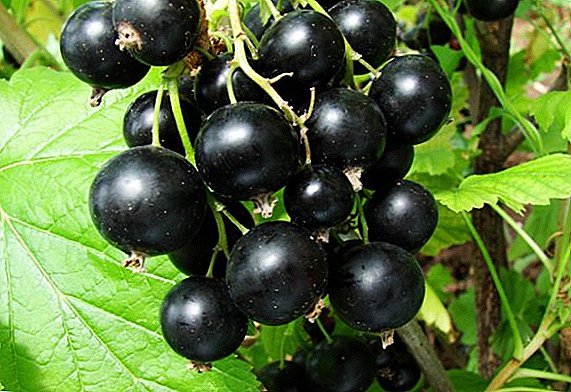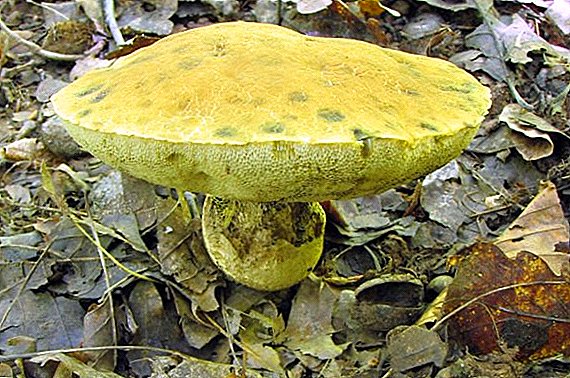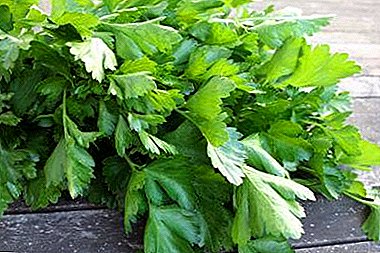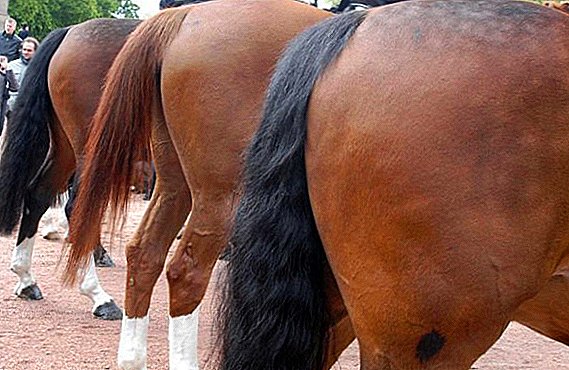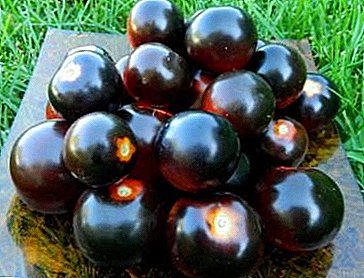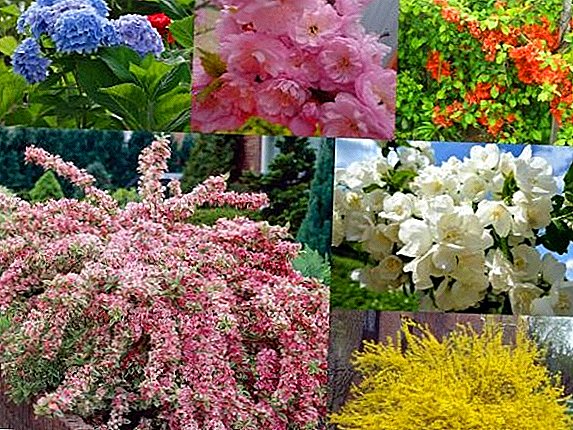 In this article, we will consider the universal plants that are an integral part of any yard and garden - flowering shrubs.
In this article, we will consider the universal plants that are an integral part of any yard and garden - flowering shrubs.
Lilac

Lilac is a shrub belonging to the Olive family, has about 30 species. In the wild, it is found throughout almost all of Europe, some species grow in Asia.
The plant is highly valued for its decorative qualities (beautiful flowers and pleasant aroma), as well as for simple care. In addition, the lilac is quite resistant to frost. The lilac shrub blooms in spring mostly in May, but some varieties begin to bloom in summer in June. Vegetation duration depends on the variety.
Did you know? As Ornamental plants lilac grown for about 500 years.Lilac need to plant from late August to September. The place for a bush should be well lit and protected from heavy winds, it can grow in a shaded place, but in this case there will be very few flowers. The plant is suitable for almost all types of soil in which moisture does not stagnate, but the best option would be a neutral soil with low acidity.
For good flowering next year, you need to prune more than 50% of the shoots that bloomed this year.
Important! Lilac categorically do not fit areas that are subject to flooding in spring or autumn.
Weigela

Weigela is a genus of deciduous shrubs, flowering twice a year, belongs to the family Honeysuckle. The shrub blooms in pink, white, yellow and red. Weigels disembark in March or April, the place should be well lit and protected from the wind. The soil should be loose, with fertile soil (mixed with sand) and have drainagebecause the plant does not tolerate excess moisture.
Important! Plants that are more than three years old can be planted in early autumn.For winter, this plant should be wrapped with protective material, and the trunk should be folded at the base. If the plant is still frozen over during the winter, it will be necessary to water it abundantly (about 10 liters), this procedure should be carried out during the summer heat.
Mahonia

Mahonia is an evergreen plant belonging to the Barberry family. This shrub has a very deep root system, which allows it to extract the necessary moisture.
The Mahonia hollow-leaf possesses not only decorative, but also useful properties.
The soil for planting Magonia should be fertile with a low acid level and good drainage. The place can be both sunny and shaded. It reproduces by layering.
Mahonia resistant to drought, and abundant watering, leading to stagnation of water can adversely affect it. Replace better in spring or autumn. Young plants need to be covered for the winter.
Did you know? Magonia berries have the property to lower blood pressure.
Almond

Almond is a perennial shrub or tree, belongs to the Plum family, has Asian origin and has about 40 varieties. Appreciated for beautiful flowers, pleasant aroma during flowering and the usefulness of the fruit. Blooms pink in March or April.
Did you know? In favorable conditions, almonds live up to 80 years and longer.The place for the almond must be sunny, since it is a heat-loving plant. The soil for planting can be almost any, but the most suitable is fertile, low-acid, well-drained.
A less suitable are clay soil with high acidity, as well as areas with high groundwater levels. Almonds are planted in the fall, as the plant takes root worse in the spring. Pruning of sick and dry branches is carried out annually, after the leaves fall and throughout the winter.
Important! Almond badly tolerates severe frosts, when the temperature drops below -20WITH buds on the plant begin to die off.
Forsythia

Forsythia, also known as Forsythia, is a small tree or shrub that belongs to the Olive trees.
Find out which species and forzition varieties are popular with gardeners.
There are 7 species of this plant. This yellow, sometimes white shrub blooms in spring from April to May.
Forsythia is not very picky in care. The site for its cultivation should be very well lit by the sun, and the ground can be any. This plant tolerates drought easily, so you should always make sure that the soil is not too moist.
Spirea

Spirea is a shrub belonging to the Rosy family. The plant has about 100 species that bloom from early spring to late summer. This plant is resistant to frost and does not need special care; it can grow in any soil, but some rules should be followed.
Read also about the intricacies of growing varieties of spirea: Wangutta, Japanese spirea, gray spirea.
The spirea has shallow roots and during drought the plant needs moderate watering that needs to be done every 2 weeks. Most diseases and pests are not dangerous for the spirea.
Most often the plant is attacked by a spider mite and aphid. Pruning is done in early spring, before the leaves bloom. Every 6-12 years on the bush you need to remove all old shoots.
Kalina Buldenezh

Kalina Buldenezh (translated from French as “snow globe”) is an ornamental shrub that has large white inflorescences resembling a snowball. It blooms no more than 3 weeks. Buldenezh prefers soil with high humidity, but can be grown in dry soil, provided good watering.
For beautiful flowering viburnum need to protect the plant from diseases and pests.
Lighting for viburnum should be moderate, shaded places will do. In the open area the leaves of the plant get burns, which lead to the death of the bush itself. Annually in the fall, pruning of dry and diseased branches is carried out, and young shoots are cut for decorative purposes, leaving only one.
Photogilla

Fothergilla is a shrub that belongs to Witch Hazel. In height reaches from 1 to 2 meters, blooms in May for 14 days, has white inflorescences up to 10 cm in size.
For this bush the most suitable place will be sunny and protected from the wind. The soil should be fertile, non-acidic and drained. Pruning a plant is carried out as needed every few years, all because the bush grows rather slowly. Photogill is very resistant to frost, but young bushes should still be covered in winter.
Did you know? Photogillah was bred in the 18th century.
Kolkvitsiya

Kolkvitsiya - perennial shrub, which belongs to the family Linneev. In height and width can reach more than 3 meters. It blooms in spring and summer. Flowering is very strong and is able to close the leaves. Like many other shrubs, the plant is cold-resistant.
Colvicia can be grown in the shade of trees, as it does not like direct sunlight. As for the soil, the best option would be fertile, well-drained soil mixed with sand. The plant does not like stagnant water. Pruning shrub should be after flowering.
Chubushnik

Chubushnik - shrub from the family Hortensia, it is also mistakenly called jasmine. There are about 70 species, the most common among us are: small-leaved, crown, Chubushnik Lemoine.
The requirements for growing chubushnik are the same for almost all of its species. This plant is very unpretentious and easily adapts to the conditions in which it grows. The only thing that can adversely affect the moth is the high level of groundwater or high soil moisture, leading to stagnation of water. The shrub is propagated by cuttings, seeds, and the most common method is dividing the bush.
Summing up, we can say with confidence that the shrubs that bloom in spring are frost-resistant, do not require complex care, and most importantly, beautiful plants that anyone can easily grow in their yard or in the garden.




